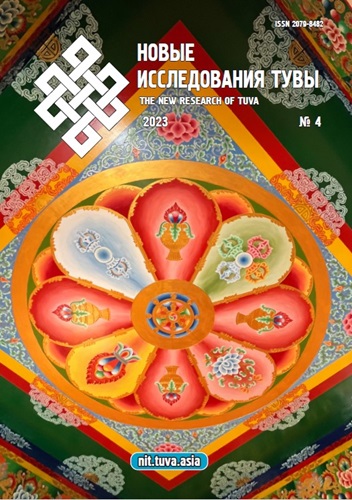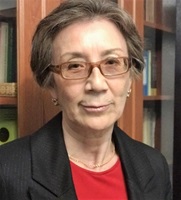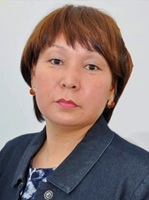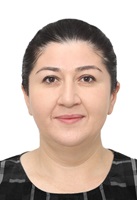Наименования женщин по брачному статусу: компонентный анализ (на материале тувинского и казахского языков)
DOI:
https://doi.org/10.25178/nit.2023.4.9Ключевые слова:
наименование женщины; брачный статус; тувинский язык; казахский язык; компонентный анализАннотация
В статье представлен компонентный анализ по лексико-семантическим группами наименований женщин на основании их брачного статуса в тувинском и казахском языках. К наиболее значимым дифференциальным семам относится хронологическое положение женщины по отношению к браку, который является точкой отсчета.
Вычленены четыре основных брачных статуса женщины, релевантных для их именования: добрачный, брачный, послебрачный и внебрачный статус. Они различаются с аксиологической точки зрения, которая отражает одобрение или неодобрение социума того или иного статуса женщины.
Наименования женщин в названных брачных статусах отличаются общими чертами и различиями, обусловленными общетюркскими корнями, религиозными, ритуально-обрядовыми и другими культурно-специфическими факторами. В казахском языке функционируют лексемы бәйбіше “старшая жена”, тоқал “младшая жена”, возникновение которых обусловлено исламом с его традициями многоженства. Эти лексемы являются безэквивалентными единицами в тувинском языке.
Библиографические ссылки
Алефиренко, Н. Ф. (2005) Спорные проблемы семантики. М. : Гнозис. 326 с.
Арғынбаев, Х. А. (1973) Қазақ халқындағы семья мен неке (тарихи-этнографиялық шолу) [Cемья и брак у казахского народа (историко-этнографический обзор)]. Алматы : Ғылым. 328 б. (Н каз. яз.).
Аргынбаев, Х. А. (1974) Свадьба и свадебные обряды у казахов в прошлом и настоящем // Советская этнография. № 6. С. 69–78.
Аргынбаев, Х. А. (1989) Традиционные формы брака у казахов // Этническая история и традиционная культура народов Средней Азии и Казахстана / отв. ред. В. Н. Басилов, Р. Г. Кузеев. Нукус : Каракалпакстан. 272 с. С. 244–259.
Вайнштейн, С. И. (1980) Тувинцы // Семейная обрядность народов Сибири (опыт сравнительного изучения) / ред. И. С. Гурвич. М. : Наука. 240 с. С. 26–30.
Джерри, Д., Джерри, Дж. (1999) Большой толковый социологический словарь : в 2 т. М. : «Вече»-АСТ. Т. 2. 544 с.
Доржу, З. Ю., Даш, Л. А. (2020) Положение «дулгуяк-кадай» в традиционной культуре тувинцев (вторая половина XIX — начало XXI в.) // Oriental Studies. Т. 13. № 1. С. 55–63. DOI: https://doi.org/10.22162/2619-0990-2020-47-1-55-63
Дыренкова, Н. П. (1926) Род, классификационная система родства и брачные нормы у алтайцев и телеут // Материалы по свадьбе и семейно-родовому строю народов СССР / под ред. В. Г. Богораз и Л. Я. Штернберга. Ленинград : Изд. Комиссии по устройству студенческих этнографических экскурсий. Вып. 1. 266 с. С. 247–259.
Жакипова, А. (1971) Развитие семейно-брачных отношений в Казахстане. Алма-Ата : Казахстан. 180 с.
Жумашева, К. Б. (2022) Қазақ тіліндегі «еркек — әйел» бинарлы оппозициясының лексикографиялық репрезентациясы [Лексикографическая репрезантация бинарной оппозиции «мужчина — женщина» в казахском языке] // Абылай хан атындағы ҚазХҚ және ӘТУ Хабаршысы. “Филология ғылымдары” сериясы. № 1 (64). С. 43–57. (На каз. яз.) DOI: https://doi.org/10.48371/PHILS.2022.64.1.004
Кара-оол, Л. С. (2007) Лексика традиционного свадебного обряда в тувинском языке // Казань и алтайская цивилизация. 50-я ежегодная международная научная алтаистическая конференция г. Казань, 1–6 июля 2007 г.: Труды и материалы / под общ. ред. З. Г. Нигматова. Казань : Идел-пресс. 264 с. С. 99–101.
Кара-оол, Л. С. (2015) Лексика предсвадебных обрядов в тувинском языке // Урало-алтайские исследования. № 4 (19). С. 17–31.
Кара-оол, Л. С. (2020) Лексика традиционных послесвадебных обрядов в тувинском языке // Новые исследования Тувы. № 4. С. 169–179. DOI: https://doi.org/10.25178/nit.2020.4.12
Каррутерс, Д. (2002) Неведомая Монголия // Традиционная культура тувинцев глазами иностранцев (конец XIX — начало XX века) / сост. А. К. Кужугет. Кызыл : Тувинское книжное издательство. 224 с. С. 103–109.
Курылев, В. П. (1995) О формах семьи у казахских кочевников и полукочевников и у некоторых других тюрко-монгольских народов (конец XIX – начало XX в.) // Этническая и этносоциальная история народов Кавказа, Средней Азии и Казахстана / отв. ред. В. П. Курылев. СПб. : МАЭ РАН. 252 с. С. 140–170.
Ламажаа, Ч. К., Майны, Ш. Б. (2020) Свадебная обрядность тувинцев: от установления семейных связей до социальной презентации // Oriental Studies. № 13(2). С. 405–421. DOI: https://doi.org/10.22162/2619-0990-2020-48-2-405-421
Ламажаа, Ч. К. (2021) Дети для тувинцев: изменения отношения в социокультурных трансформациях // Новые исследования Тувы. № 4. С. 57–75. DOI: https://doi.org/10.25178/nit.2021.4.5
Потапов, Л. П. (1969) Очерки народного быта тувинцев. М. : Наука. 401 с.
Рахимжанов, К., Акошева, М., Темиргазина, З. (2020) Метафорическо-метонимическая интерпретация сердца в казахском и тувинском языках: взаимодействие языка, анатомии и культуры // Новые исследования Тувы. № 4. С. 261–271. DOI: https://doi.org/10.25178/nit.2020.4.18
Стасевич, И. В. (2009) Брак и семья у казахов в конце XIX — начале ХХI в.: время и традиция // Центральная Азия: Традиция в условиях перемен. Вып. II / отв. ред. Р. Р. Рахманов, М. Е. Резван. СПб. : МАЭ РАН.396 с. С. 93–111.
Стасевич, И. В. (2011) Социальный статус женщины у казахов: традиции и современность. СПб. : Наука. 202 с.
Субботин, С. С. (2016) Тувинская семья и ее функции. Традиции и инновации // Вестник Калмыцкого института гуманитарных наук Российской Академии наук. Т. 28. Вып. 6. С. 159–171. DOI: https://doi.org/10.22162/2075-7794-2016-28-6-159-171
Тарбастаева, И. С. (2010) Тувинская семья: традиции и современность // Новые исследования Тувы. № 2. С. 259–267.
Усенова, М. М. (1986) Семья и религия. Алма-Ата : Мектеп. 254 с.
Хертек, Л. К. (2008) Устойчивые формулы и терминология свадебной обрядности тувинцев // Эртем бижиктери [Учёные записки] / отв. ред. М. В. Бавуу-Сюрюн. Кызыл : ТывГУ. Вып. II. 174 с. С. 80–91.
Юша, Ж. М. (2020) Виды традиционного брака у тувинцев Китая в начале XXI в. // Этнография Алтая и сопредельных территорий. № 10. С. 149–152. DOI: https://doi.org/10.37386/2687-0592-2020-10-149-152
Temirgazina, Z., Khamitova, G., Orazalinova, K. (2016) Didactic Features оf a Learner’s English-Russian Dictionary of Biology // Development Research Journal of Pharmaceutical, Biological and Chemical Sciences. № 7(2). P. 317–326.
Temirgazina, Z., Albekova, A., Kurmanova, Z. (2021) One More Time аbout the Heart: Naive Anatomy in the Kazakh Language in Comparison with Russian and English // Przeglad Wschodnioeuropejski. Vol. XII. № 2. P. 459–475. DOI: https://doi.org/10.31648/pw.6876
Temirgazina, Z., Rakhimzhanov, K., Akosheva, M., Luczyk M., Kulumzhanov, N., Shakharman, A., Zuldubaeva, R. (2022) Semiotics of family in Kazakh wedding toasts in the perspective of intercultural communication // Metaphor and the Social World. Vol. 12. № 1. P. 270–291. DOI: https://doi.org/10.1075/msw.19019.tem
Опубликован
Как цитировать
For citation:
Temirgazina Z. K., Nikalayenka S. V., Shakharman A. P. and Apaeva S. Kh. Naimenovaniia zhenshchin po brachnomu statusu: komponentnyi analiz (na materiale tuvinskogo i kazakhskogo iazykov) [Names of women by marital status: component analysis (based on the Tuvan and Kazakh languages)]. New Research of Tuva, 2023, no. 4, pp. 124-138. DOI: https://doi.org/10.25178/nit.2023.4.9
Выпуск
Раздел

Это произведение доступно по лицензии Creative Commons «Attribution-NonCommercial» («Атрибуция — Некоммерческое использование») 4.0 Всемирная.

Автор (лицензиар) произведения предоставляет простую (неисключительную) лицензию на использование редакцией (лицензиатом) произведения науки, который заключается в упрощённом порядке (открытая лицензия), согласно ст. 1286.1. «Открытая лицензия на использование произведения науки, литературы или искусства» Гражданского кодекса Российской Федерации.
В нашем издании публикуемые материалы доступны по лицензии Creative Commons «Attribution-NonCommercial» («Атрибуция — Некоммерческое использование») — CC BY-NC.
Т. к. лицензия открытая, автор имеет право разместить статью после ее выхода на своем сайте, читатель может скопировать и разместить на своих персональных ресурсах, в том числе в виде выдержек, конспектов, но:
а) обязательно должно быть указано ФИО автора, неизмененное название статьи и гиперссылка на первоисточник (журнал «Новые исследования Тувы»),
б) размещающий не имеет права брать деньги за доступ к этому материалу или каким бы то ни было образом давать преимущество одним читателям над другими,
в) при перепечатке автором текста статьи без значительных изменений (если сохраняется 30% текста или более) должно быть указано, что первая редакция статьи вышла в журнале «Новые исследования Тувы» и сделана соответствующая ссылка.
Лицензия действует по всему миру, длится в течение срока авторских прав на произведение, является неотзывной.












